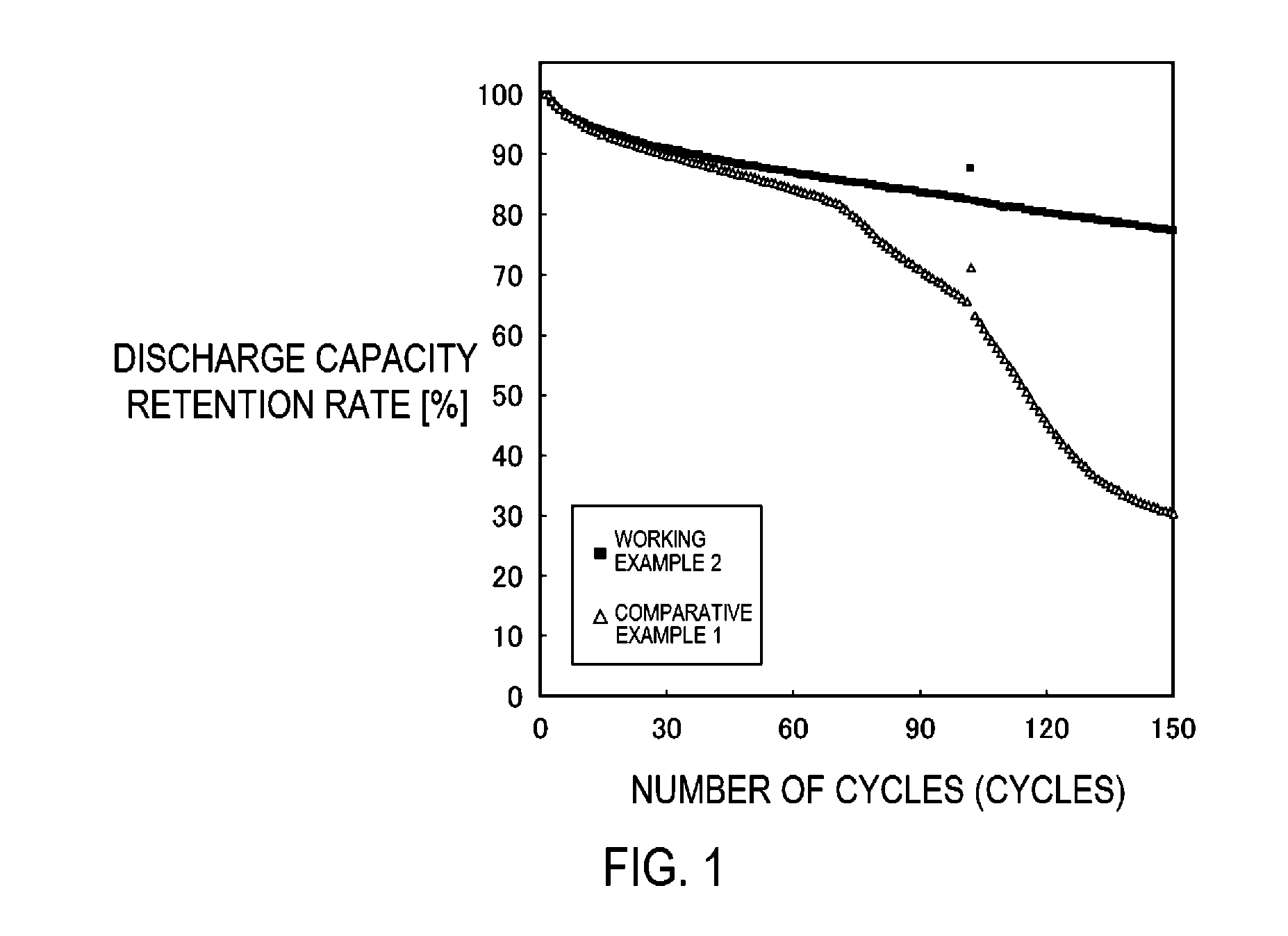Carbonaceous material for anode of nanaqueous electrolyte secondary battery, process for producing the same, and anode and nonaqueous electrolyte secondary battery obtained using the carbonaceous material
- Summary
- Abstract
- Description
- Claims
- Application Information
AI Technical Summary
Benefits of technology
Problems solved by technology
Method used
Image
Examples
reference example 1
[0187]First, 300 g of 1% hydrochloric acid was added to 100 g of an extracted coffee residue, and de-mineral was performed by repeating a washing operation of stirring for 1 hour at 100° C., filtering, and then washing with 300 g of water 3 times so as to obtain a de-mineral coffee extract residue. After the resulting de-mineral coffee extract residue was dried in a nitrogen gas atmosphere, preliminary carbonization was performed by means of detarring for 1 hour at 700° C. under a nitrogen air flow. This was pulverized using a rod mill to form carbon precursor microparticles. Next, this carbon precursor was subjected to final heat treatment for 1 hour at 1250° C. to obtain a reference carbonaceous material 1 with an average particle size of 10 μm.
reference example 2
[0188]A reference carbonaceous material 2 was obtained in the same manner as in Reference Example 1 with the exception that the de-mineral step using an acid was not performed.
reference example 3
[0189]After an extracted coffee residue was dried in a nitrogen gas atmosphere, the sample was detarred at 700° C. and subjected to preliminary carbonization. First, 300 g of 1% hydrochloric acid was added to 100 g of a coffee residue subjected to preliminary carbonization, and de-mineral was performed by repeating a washing operation of stirring for 1 hour at 100° C., filtering, and then washing with 300 g of water 3 times so as to obtain a de-mineral coffee extract residue. This was pulverized using a rod mill to form carbon precursor microparticles. Next, this carbon precursor was subjected to final heat treatment for 1 hour at 1250° C. to obtain a reference carbonaceous material 3 with an average particle size of 10 μm.
PUM
 Login to View More
Login to View More Abstract
Description
Claims
Application Information
 Login to View More
Login to View More - R&D
- Intellectual Property
- Life Sciences
- Materials
- Tech Scout
- Unparalleled Data Quality
- Higher Quality Content
- 60% Fewer Hallucinations
Browse by: Latest US Patents, China's latest patents, Technical Efficacy Thesaurus, Application Domain, Technology Topic, Popular Technical Reports.
© 2025 PatSnap. All rights reserved.Legal|Privacy policy|Modern Slavery Act Transparency Statement|Sitemap|About US| Contact US: help@patsnap.com



